
Slovakia Interview Outfits
Slovakia Details
- Slovakia people - Slovaks
- Slovakia capital / capital of Slovakia - Bratislava
- Slovakia language - Slovak
- Slovakia population / population of Slovakia - 2015 estimate 5,426,252
- Slovakia currency - Euro
- Business etiquette focuses on the behaviour deemed appropriate in a professional setting and you’ll be more likely to make an excellent impression on people you encounter if you maintain a professional approach.
- Attitudes and values are very important in trying to develop a business relationship between two cultures or countries. Slovaks are well known for their professionalism and level-headedness in business.
- They are friendly, but reserved, and it will take a few visits to get to know you before they can really feel comfortable with you.They will certainly be impressed and happy if you make an effort to learn Slovak, even if only a few basic greetings.
- Slovakia is real famous for their traditions and hottest famous for their folk dress , ice hockey shirts , lúčnica and the country is also referred to as sk slovakia , slovakia eu , slovaki and the people are referred as slovaks
SLOVAKIA DRESS CODE FOR JOB INTERVIEWS
- It is important to demonstrate at an interview good appearance as well as good manners.
- Dress neatly and formally.
- slovakian men wear conservative jackets and ties.
- slovakian women / slovakian girls wear skirts and blouses or dresses.

- Caps, bandannas, athletic shoes, sweats, unkempt clothes, jeans, singlets, open shoes and thongs are never acceptable.
- If the wind was blowing, comb your hair before making first contact at the reception. Do not carry a water bottle or coffee mug.
- Carry only a slim folder holding your job application documents and CVs. Do not chew anything.
BUSINESS DRESS CODE
- In the Slovak business community, your appearance gives the first impression about you.
- Cleanliness and tidiness are a must and you should dress in a professional and conservative manner, paying attention to the time and place of the occasion.
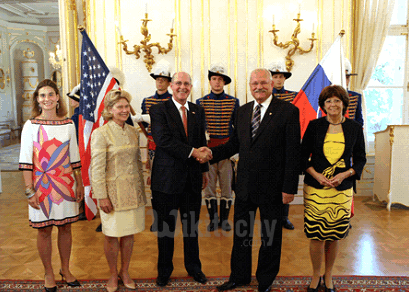
- For slovakian men, a dark coloured suit or jacket and trousers with tie is appropriate and woman managers like to wear suits.
- Your choice of attire should demonstrate individual style and taste, but you should avoid bright colours if you want to be taken seriously; woman should also take care to avoid provocative clothes.
- There is a saying that the way you dress shows your respect for the business partner.
- Large organisations set a dress code policy for their employees, through which they are able to show respect for their business partners, customers and the general public.
- In small and medium sized companies, there are usually no specific dress code policies, except where employees have to wear uniforms, and the style is more business casual.
- This is unless there is an important meeting or special occasion, where everyone is expected to dress more formally.
FOLK COSTUME OF SLOVAKIA
- Folk culture plays an important role in the history of each country. The traditional clothing worn by a people who worked the land and were close to nature is intriguing to amateur observers, to artists, and to ethnographers alike, largely because of its wide variety of
- forms,
- colors, and
- decorations.
- It is important to note that all forms of traditional dress (kroj) are a result of centuries of development.
- It is assumed that both slovakian men’s and slovakian women’s clothing was originally shirt-type.
- In the middle Ages it gradually changed form, with only some clothing accessories being similar for both slovakian men and woman.

- In its oldest period, traditional clothing was significantly influenced by geographical environment and by climatic conditions. These factors determined the basic materials –flax or hemp cloth, drapery or fur from which the costume was made, as well as its overall fitting character.
- In lowland areas the clothing was made from linen and was loose. In mountain areas, woolen textiles and furs were also used and the clothing was fashioned more tightly.
- The development of textile manufacturing in the 18th century and the development of industry in the 19th century meant that, apart from home-woven textiles, factory-made materials of cotton, wool, and even silk, began to be used.
- New materials brought changes in the form and style of clothing accessories and were accompanied by an increased variety of colors.
- 17th century knowledge was enriched in the 18th century by the availability of colored embroidery threads made not only of cotton, but also of silk. Domestic and foreign embroidery patterns developed into a wide range of local styles which were fully evident in the decorating of folk costumes.
- Apart from needlework which was dominate mainly in western and central Slovakia; decorative weaving and appliqués were also used. The economic prosperity and individual social differences of the region were reflected in them.
- Along with the economic and social aspects in the development of folk costumes is the functional aspect. The primary role of clothing is the protection of the body.
- This function was fulfilled mainly by the components of the under and outer clothing. Working clothes were adapted to natural and working conditions.
- Festive clothing has undergone a gradual development and is differentiated from work clothes by using newer and more expensive materials and richer and more elaborate decoration.
- Its specific look was further determined by national, local and religious affiliation as well as by the
- age,
- marital, and
- social status of the wearer.
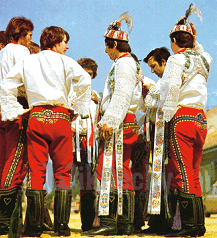
- Festive clothing was related to ritual clothing notable in wedding and mourning clothes. These circumstances were influenced by contemporary taste, collective standards and aesthetic feeling of both creators and wearers of traditional clothing.
- They contributed to the creation of a great richness in local forms of dress. To date, the science of ethnology has managed to describe approximately sixty of them.Folk costumes attract the wider public chiefly by their external visual form.
- Specialists and ethnographers, on the other hand, are interested also in the inner nature of the traditional costume based on a study of its composition from different clothing accessories, their style and development.
- Terminology is an important source of information about the traditional costumes. Such study makes it possible to assign the traditional costumes into
- wider regional,
- cultural and
- ethnic backgrounds
- On the basis of the composition of elementary clothing parts, we can talk about three types of male clothing
- Male clothing consisted of linen trousers, a shirt with wide sleeves, and an apron.
- Drapery clothing consisted of narrow drapery trousers and a shirt with wide sleeves.
- Twill clothing consisted of narrow twill trousers and a shirt with cuffs on the sleeves. “Shroud”
- Two types of female clothing
- female clothing consisted of a shroud – a kind of shirt without sleeves,
- a short blouse with baggy sleeves, a skirt and an apron.
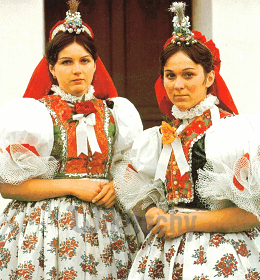
- The shirt style consisted of a long shirt with sleeves, a skirt and an apron. Furthermore, the basic clothing of slovakian men and slovakian women included accessories such as
- bodices,
- vests,
- coats,
- waistbands and
- belt.
- Outer clothing consisted of a tabard, a smock, and various forms of fur coats. slovakian women’s clothing also included scarves and linen dresses.
- Headwear and footwear were an inseparable part of such clothing. Hair styles and headwear formed one unit. Married slovakian women / slovakian girls wore bonnets and scarves, single slovakian girls wore either scarves or were bareheaded.
- slovakian men, both single and married, always wore hats – in winter, fur caps. The best way to describe the variety of styles of the footwear is through working shoes, which were worn all year round.
- Pantofles were usual in western and southwestern Slovakia, cloth slippers and boots called kapce were typical throughout central Slovakia mostly in winter, and krpce, leather moccasin-like shoes, were worn in the summer.
- In eastern Slovakia the most common footwear consisted of krpce as well. The most common festive footwear through out Slovakia was boots. Since the beginning of the 20th century, ready-made shoes began to be worn more extensively, and slovakian men usually wore hobnailed boots.
- In the course of the development in the last two centuries, the basic types of clothing and footwear in Slovakia formed into two characteristic groups:
- clothing and footwear of the lowland, and
- clothing and footwear of the mountain regions.
- In the central European context, the complex of lowland regions connects Slovak costumes with the costumes of southeastern Moravia, eastern Austria, Hungary, northern Yugoslavia and western Romania.
- A complex of mountain ranges connects Slovak costumes with costumes from
- northeastern Moravia,
- southern Poland,
- western Ukraine, and
- southern and eastern Romania.
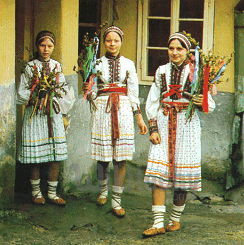
- Two different cultural areas cross on the territory of Slovakia: the lowland Pannonian basin and the Carpathian mountain region.
- The end of the 19th century and the beginning of the 20th century saw significant changes in the existence and development of traditional clothing. On the one hand, the local forms experienced their fullest development, and on the other hand, the first signs of decline appeared.
- The following two opposing phenomena influenced the development and decline of traditional clothing in the period: the poverty vs. the wealth of different groups of village citizens.
- Poor people dressed according to the availability of clothing; rich people dressed in clothes that would signify their wealth and social status.
- slovakian women / slovakian girls, as a result of their economic and social position and stronger ties to the life in villages and work for the family, ceased to wear folk costumes much later than slovakian men.
- Those slovakian men, who did not work in the village, but away from it, put away their folk costumes because they did not want to look different in the new environment, in factories for example. With regard to slovakian women, a semi-urban type of clothing developed, characterized by its darker colors.
- Another development concerning men’s clothing resulted in a complete change from folk costumes to period urban clothing.
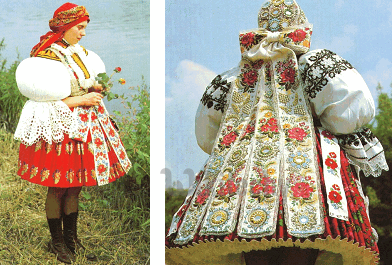
- The development and use of the original traditional costumes continued only in several small regions throughout Slovakia.
GENERAL STYLE TIPS
- Jeans are always popular and, teamed with lighter layers for the summer (e.g. camisoles or a t-shirt) and warmer ones for the winter (e.g. a sweater over long-sleeved tops), they will serve as a versatile base to your wardrobe.
- Add in a smarter outfit or dress for more formal occasions.
- The sun can be deceptively strong even if the temperature feels cool so we suggest that you use a good quality sunscreen (we love the Riemann P20 range for 10 hour protection) and sunhat.
- Hottest interest for slovakians are on the czech dolls , czech clothing , slovakia clothing , slovak embroidery , slovak embroidery patterns , hungarian dress , wedding in slovakia , english folk dress , czech traditional clothing , slovakia brides , slovak folk dress , czech folk costume
CLOTHING TIPS FOR slovakian women
- A pashmina is a versatile piece that will dress up any outfit, as will some simple accessories.
- If you are going to visit any religious sites, use your pashmina or a wrap to cover your shoulders and bare legs.
CLOTHING TIPS FOR slovakian men
- There are no specific things to bring to your attention, check out our packing list for our suggested capsule wardrobe.
- For great versatile travel jackets with multiple pockets including RFID security options, we love the SCOTTeVEST range.
